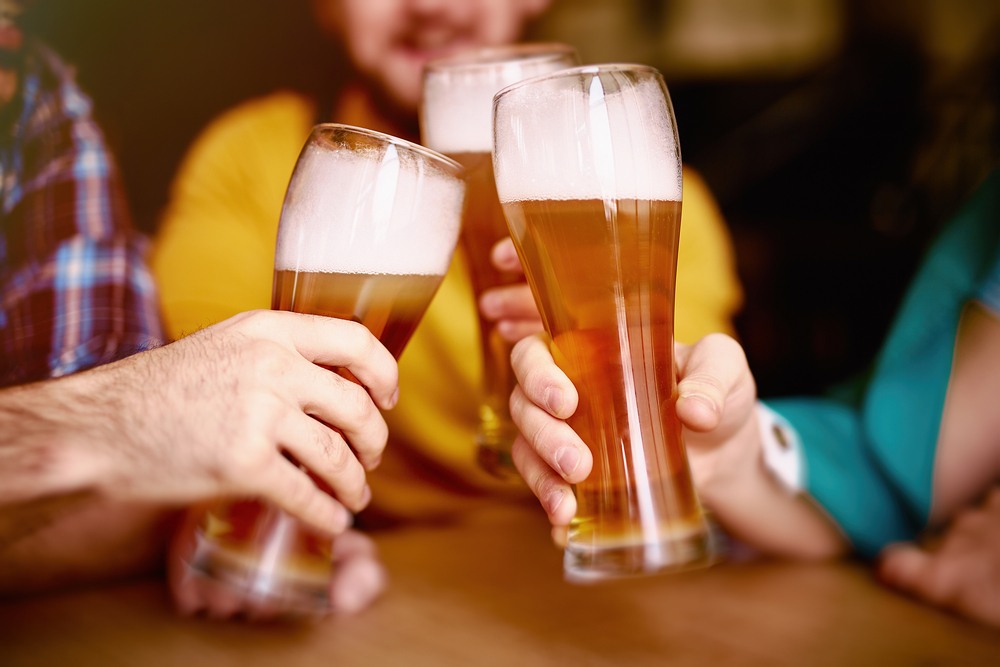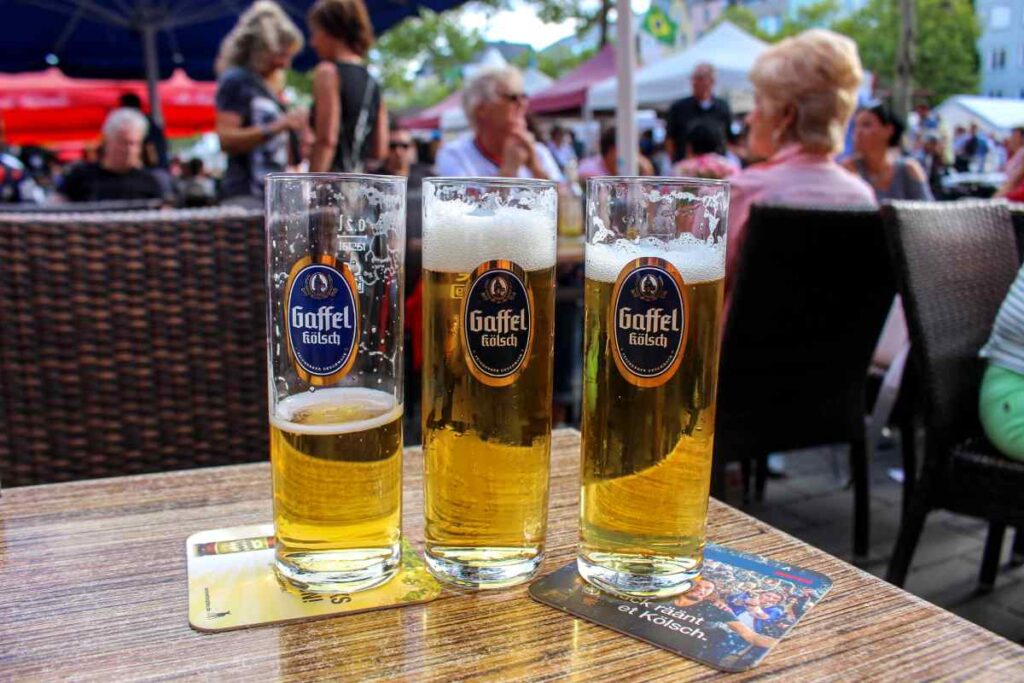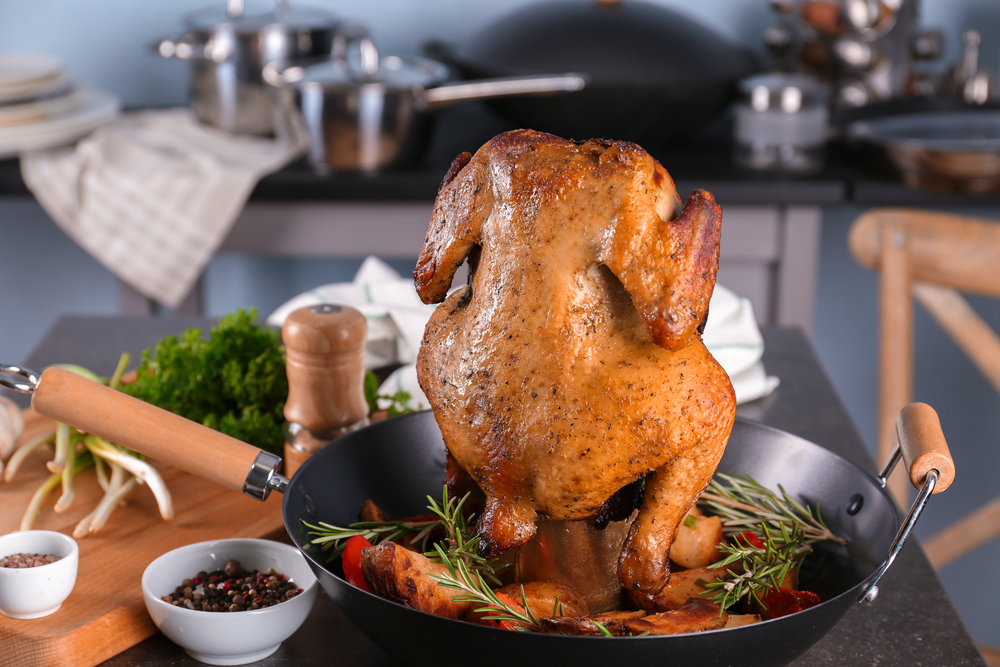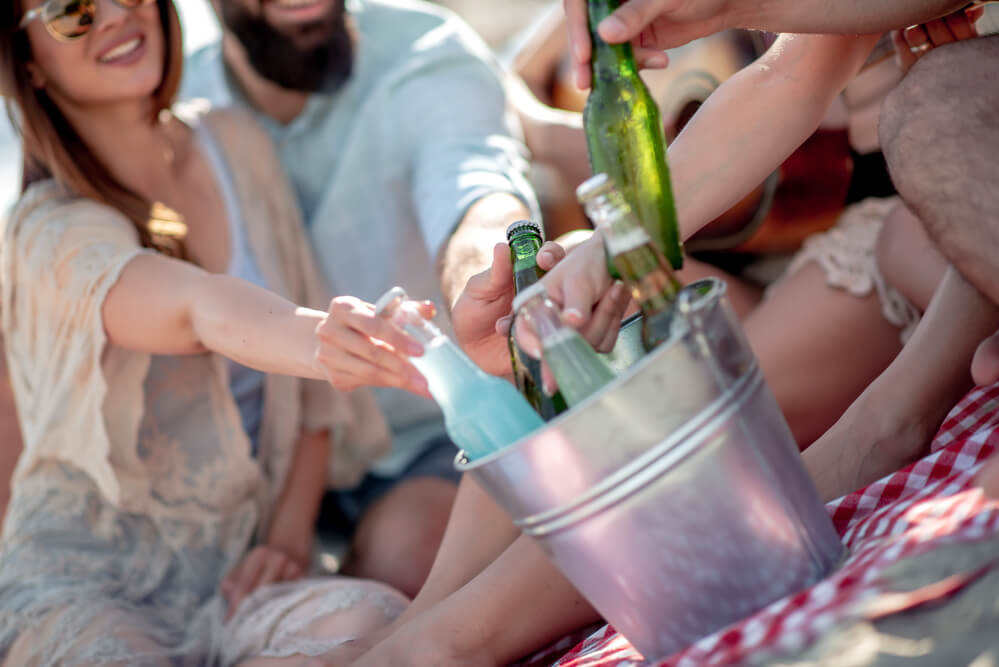What is a Blonde Ale? In this article, you will learn interesting facts about blonde ale.
Blonde ale is a fascinating beer style that offers a diverse range of flavors and characteristics. Originating from regional variations and brewing traditions, these light and refreshing beers are perfect for casual sipping and pairing with a variety of dishes. American blonde ales, for example, often feature a lighter body, more hop character, and citrus notes, making them a popular choice for warm weather and outdoor gatherings blonde ale.
One of the appealing aspects of blonde ales is their visual appearance, which can range from pale yellow to rich gold, with brilliant clarity and a medium snow-white head blonde ale. The aroma profile typically includes mild, sweet malt, hops, and fruity esters, combining to create a balanced and enjoyable drinking experience. These beers showcase a unique blend of approachability and complexity, with easy-drinking malt flavors complemented by subtle fruit, hop, or character malt notes American blonde ale.
Table of Contents
History of Blonde Ale
Blonde Ale has a rich history that traces its roots to both pale ale and Kölsch traditions. Originating from Europe, this well-loved beer has evolved over time, with regional variations resulting in diverse flavors and characteristics.
In the 1800s, the initial brews of Blonde Ale likely emerged as lighter versions of the popular pale ale, which itself had centuries-old traditions. Back then, these variations were known as dinner or sparkling ales, offering refreshing flavors perfect for summer days source.
Belgium played a significant role in the development of the Blonde Ale. Belgian brewers were influenced by their own brewing philosophies, making the Blonde Ale distinctive from its close relative, the Pilsner, or other light-colored Lagers. One important distinction is that Blonde Ales are top-fermented beers, a signature of the Belgian approach to brewing source.
As the popularity of Blonde Ale spread to the United States, American brewers adopted their own twist on the style. The American Blonde Ale is generally lighter, with pronounced hop character and citrus notes. This makes it perfect for a refreshing summertime drink.
In conclusion, the history of Blonde Ale is a testament to the ingenuity and adaptability of brewers across both Europe and the United States. Today, beer lovers can enjoy the diverse range of flavors and characteristics offered by Blonde Ales, making it a favorite among many.
Characteristics of Blonde Ale
Blonde Ales are a popular beer style known for their approachable taste and refreshing qualities. In this section, we will explore the characteristics of Blonde Ales, focusing on their appearance, aroma, flavor, and mouthfeel.
Appearance
Blonde Ales have a light golden color, ranging from pale yellow to rich gold. They typically have good clarity, sometimes even appearing brilliant. A medium snow-white head caps the top, which should have good retention characteristics, showcasing its carbonation.
Aroma
The aroma of a Blonde Ale is generally low to moderate, with subtle hints of sweet malt, hops, and fruity esters. Some regional variations, such as the American Blonde Ale, may feature more hop character and noticeable citrus notes.
Flavor
Blonde Ales are well-balanced, with a low malt sweetness and a low to medium bitterness. The hop flavor is usually mild, while fruity esters from the yeast may add a subtle fruitiness to the taste profile. Their alcoholic strength can range from 3.8% to 5.5% ABV, which makes them an approachable option for a wide variety of beer drinkers.
Mouthfeel
Medium to high carbonation is common in Blonde Ales, providing a lively mouthfeel that complements the beer’s refreshing nature. The body is typically light to medium, with a smooth texture. The balance between sweet and bitter flavors gives Blonde Ales an easy-drinking quality, making them an attractive choice for those looking for a beer with character but without overpowering intensity.
Blonde Ale vs Lager
Blonde Ale
Blonde Ales are a lighter style of ale, often exhibiting a bright, golden color. They have a balanced flavor profile, providing a pleasant and easy-drinking beer experience. Ales, in general, are brewed using top-fermenting yeasts at warmer temperatures, giving them a faster fermentation process and a relatively short maturation period.
Blonde Ales tend to have a mild hop bitterness, fruitiness from the yeast, and a moderate level of malt sweetness. They are a popular choice for craft brewers and beer drinkers looking for a refreshing, approachable beer.
Lager

Lagers, on the other hand, are brewed using bottom-fermenting yeasts at colder temperatures. This slower fermentation process allows for a longer maturation period, helping to create a more refined and crisp taste profile.
Pilsners are the most common type of lager and are characterized by their light, golden color, and a distinct hop bitterness. Lagers, in general, offer a clean and thirst-quenching experience, making them a popular choice for those who enjoy crisp, refreshing beers.
When comparing Blonde Ales and Lagers, these are the main differences to consider:
- Fermentation process: Ales use top-fermenting yeasts and have a faster fermentation process, while lagers utilize bottom-fermenting yeasts and a slower fermentation process.
- Temperature and maturation: Ales are typically brewed at warmer temperatures with a shorter maturation period, whereas lagers are brewed at colder temperatures and require a longer maturation period.
- Flavor profile: Blonde Ales tend to have a more balanced and fruity flavor profile, while lagers, particularly pilsners, are known for their clean and crisp hop bitterness.
Ultimately, both Blonde Ales and Lagers have their unique characteristics and appeal to different tastes and preferences, although they both provide a light and refreshing beer option.
Different Types of Blonde Ales
Blonde Ales are known for their approachable and easy-drinking characteristics, with various regional variations adding unique twists to the style. In this section, we will explore the different types of Blonde Ales, including American Blonde Ale, Golden Ale, Kölsch, Belgian Blonde, and Fruit Blonde Ale.
American Blonde Ale
American Blonde Ales are typically lighter and more refreshing, with a smooth and rounded flavor. Due to their simplicity, they are considered an American classic. These beers have a balanced hop character along with citrus notes, making them perfect for a hot summer day.
Golden Ale
Golden Ales are similar to American Blonde Ales in terms of flavor and appearance, but often have a slightly more robust hop profile. This beer style is known for its visually appealing golden hue and crisp, easy-drinking nature. Although not particularly dominating in malt or hop flavors, Golden Ales maintain a well-rounded character, which makes them a favorite among beer enthusiasts.
Kölsch

Originating from Cologne, Germany, Kölsch is another type of Blonde Ale that has its unique characteristics. This style is brewed with ale yeast but is then cold-conditioned, similar to lager beers. This process gives Kölsch a clean and crisp taste while retaining some fruity esters from the ale yeast. Kölsch beers are known for their subtle hop bitterness, light body, and balanced maltiness.
Belgian Blonde
Belgian Blonde Ales come from Belgium and offer a more complex flavor profile than American Blonde or Golden Ales. These beers are often brewed with Belgian yeast strains, which provide unique fruity and spicy esters, such as banana and clove. Belgian Blondes are generally higher in alcohol content than their American counterparts, and they also exhibit a greater degree of maltiness.
Fruit Blonde Ale
Fruit Blonde Ales are an exciting twist on the traditional style, incorporating various fruits or fruit flavors into the brewing process. These beers can encompass any blonde ale style, from American to Belgian, but with added fruitiness. Fruit Blonde Ales can range from subtly sweet to boldly tart, offering an increasingly diverse drinking experience. Popular fruit additions include apricot, raspberry, and citrus fruits, such as orange or grapefruit.
Key Ingredients
Blonde Ales are known for their simplicity and clean, balanced flavors. The key ingredients that make up a blonde ale include malt, hops, yeast, and sometimes adjuncts such as wheat or rye.
Malted barley provides the base for blonde ales, with Pilsner malt being a common choice. Pilsner malt contributes to the light color and delicate flavor profile of these beers. Adjunct grains like flaked wheat or rye can be added to the grain bill to enhance the mouthfeel, head retention, and add a subtle complexity.
Hops play a crucial role in balancing the malt sweetness, but without overpowering the delicate character of the beer. Examples of hop varieties used in blonde ales are Saaz, Styrian Goldings, and East Kent Goldings. American Blonde Ales may have a more pronounced hop character and often feature citrus notes from hops like Cascade.
Yeast is another essential ingredient that affects the overall flavor and aroma of blonde ales. While some variations use neutral yeast strains, Belgian blonde ales often utilize specific strains that impart ester and phenolic flavors, adding a layer of complexity to the beer.
In addition to the primary ingredients, some brewers might opt to experiment with additives like honey, spices, or fruit to create unique and nuanced variations of the traditional blonde ale. The combination of ingredients and brewing techniques define the final product’s appearance, aroma, and taste.
Brewing Process
Blonde ale is a versatile and well-rounded beer appreciated for its light color, crisp flavor, and smooth drinkability. The brewing process of a blonde ale focuses on achieving a balance between malt and hop flavors, while ensuring a clean and refreshing finish.
The base malt in a blonde ale typically consists of 2-row or pale malt, which provides a solid foundation for the beer and helps to keep the color light. Some brewers may add specialty grains, such as Vienna or Munich malt, to provide additional depth and complexity to the malt character. The choice of water is also crucial for a blonde ale, as the mineral content can impact the overall flavor and mouthfeel of the beer. Water with a balanced mineral content is ideal for brewing this style.
Hops are used conservatively in blonde ales, usually providing a moderate level of IBU (International Bitterness Units) to balance the malt sweetness. Popular hop choices for blonde ales include Citra, Cascade, and Saaz, which offer subtle fruity, floral, and spicy flavors without overpowering the malt character. Blonde ales are not typically hop-forward like an IPA, so the hop additions should be adjusted accordingly.
The yeast used in the fermentation process can play a significant role in determining the beer’s final flavor profile. In blonde ales, a clean fermenting yeast strain is crucial, as it allows the malt and hop flavors to shine through without the presence of strong esters or phenols. Yeast strains such as Wyeast #1056, White Labs WLP002, and Safale US-05 are excellent choices for fermenting a blonde ale at lower temperatures to minimize the formation of esters and diacetyl.
According to the BJCP (Beer Judge Certification Program) guidelines, a typical blonde ale will have an ABV (Alcohol by Volume) ranging from 4.0% to 6.0%. The goal is to create a beer that is sessionable and easy to drink, without sacrificing flavor or complexity.
In summary, brewing a blonde ale involves selecting the right balance of base malts, specialty grains, and hops to create a crisp and refreshing beer that is light in color, low in esters and diacetyl, and has a moderate ABV. Paying attention to water chemistry and choosing a clean fermenting yeast strain will further enhance the overall brewing process and ensure the best possible representation of this popular beer style.
Popular Blonde Ales
American
In the American craft beer scene, Blonde Ales have gained quite a reputation for their refreshing and light flavors. One standout example is the 805 from Firestone Walker Brewing Company, a California Blonde Ale that offers an easy-drinking experience. Another popular choice is the Kiwanda Cream Ale from Pelican Brewing Company, which has won multiple awards at the Great American Beer Festival.
Another American Blonde Ale to consider is True Blonde Ale from Ska Brewing Company. This Colorado-based brewery creates a delightful beer with honey undertones and a subtle hint of hops, making it a perfect choice for those who prefer a well-balanced and easy-to-drink brew.
European
While American craft beers have been making waves in the world of Blonde Ales, European breweries have also been producing some noteworthy options. In Belgium, there is a strong tradition of producing Blonde Ales with distinctive flavors and characteristics. These beers often showcase fruity or spicy notes and are known for their effervescent, bright, and refreshing qualities.
One example of a highly regarded European Blonde Ale is Leffe Blonde, a Belgian-style Abbey Ale with a rich history and an array of flavors that include hints of vanilla and clove. While the world of Blonde Ales is diverse and vast, these selections showcase the unique and well-loved characteristics of both American and European approaches to brewing this style of beer.
Food Pairings

Blonde ales are a versatile and refreshing beer style that pairs well with a variety of dishes. Their light and balanced flavor profile complements many different types of food, making it a versatile choice for food pairings.
When it comes to chicken dishes, blonde ales work wonders. The subtle malt and hop flavors in the beer provide a nice backdrop for grilled or roasted chicken. For example, pairing a blonde ale with a chicken pesto dish allows the beer’s malty notes to balance the garlic and basil flavors, while its carbonation cuts through the richness of the pesto.
Spaghetti dishes can also be a delightful match for blonde ales, particularly those with a more hoppy profile. The beer’s citrus and peppery notes can blend harmoniously with tomato-based sauces, providing a delightful contrast to the acidity and richness of the dish.
In terms of their flavor profile, blonde ales often exhibit caramel notes and fruit esters. This makes them a brilliant choice for pairing with dishes that feature caramelized ingredients or fruity components. For instance, a blonde ale can pair nicely with a caramel-glazed salmon or a dish featuring grilled peaches in a salad.
The world of beer styles is vast, and it’s sometimes easy to confuse blonde ales with other light-colored styles such as pale ales and American ales. While these beer styles may share some similarities in appearance and certain flavor characteristics, they do have distinct differences in terms of hop presence and overall intensity. A blonde ale is generally less hop-forward and more balanced than a pale ale or an American ale, which allows it to pair more seamlessly with a wider range of foods.
Blonde ales are known for their subtle hop flavors and hints of caramel flavor, making them great companions to dishes that feature sweet or savory elements. Foods with rich, bold flavors can benefit from the contrast provided by a blonde ale’s light and approachable profile.
In conclusion, when it comes to food pairings, blonde ales are an excellent option due to their adaptable, balanced, and refreshing profiles. They can effortlessly complement dishes with diverse flavor profiles, from chicken and spaghetti to dishes with caramel notes and fruit accents.



